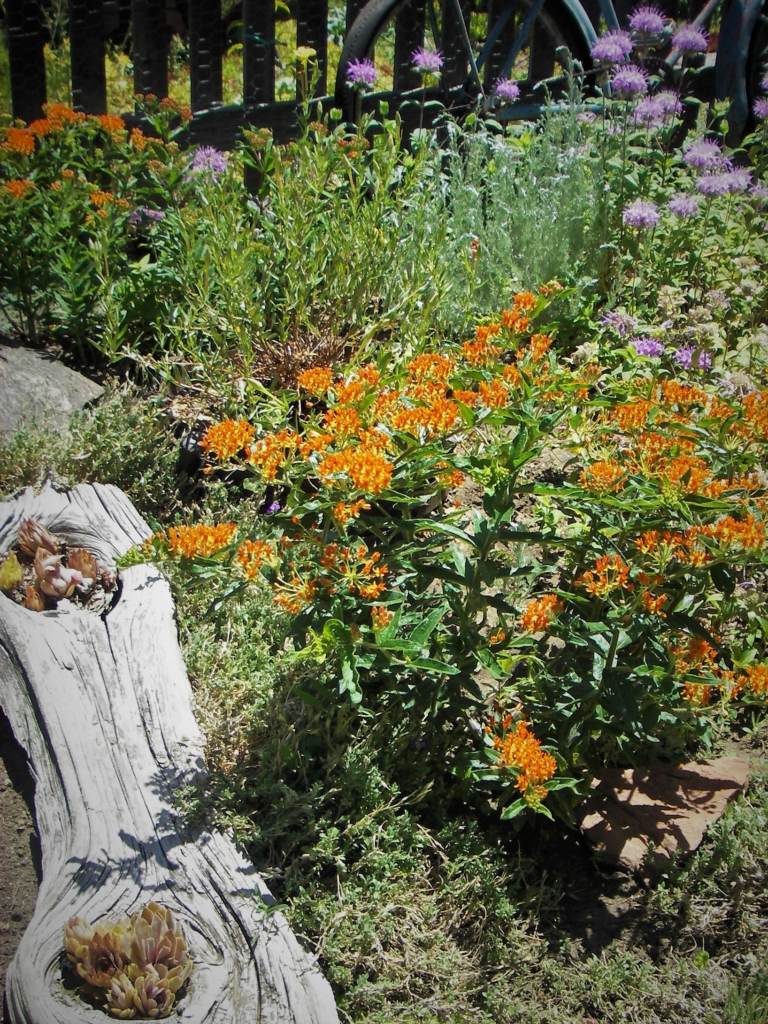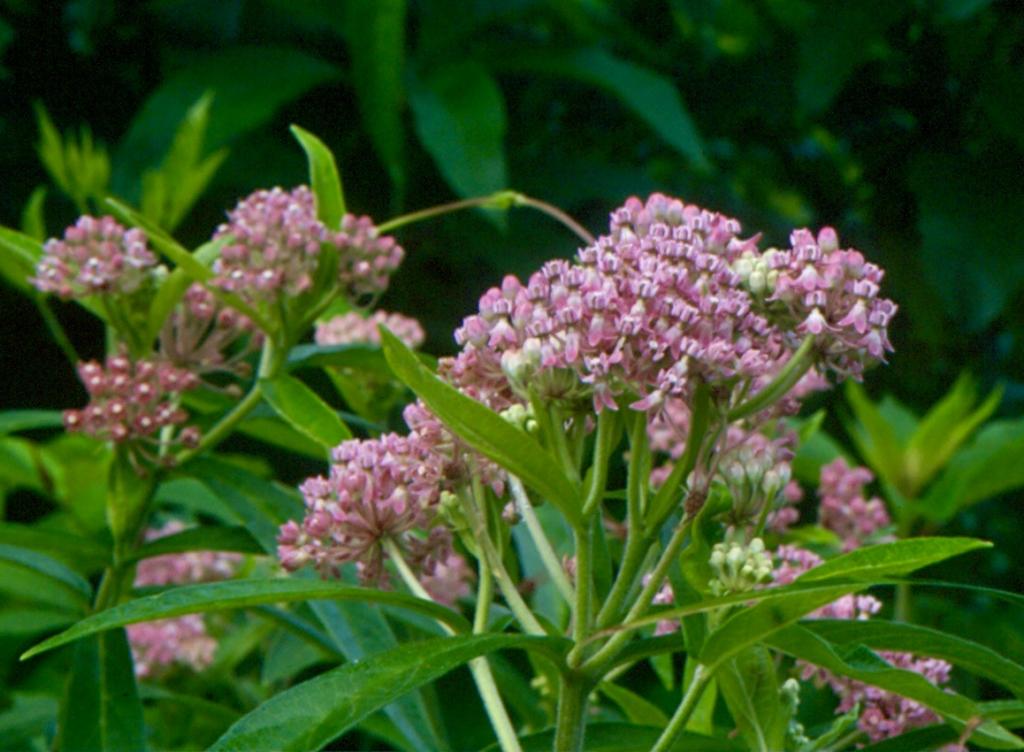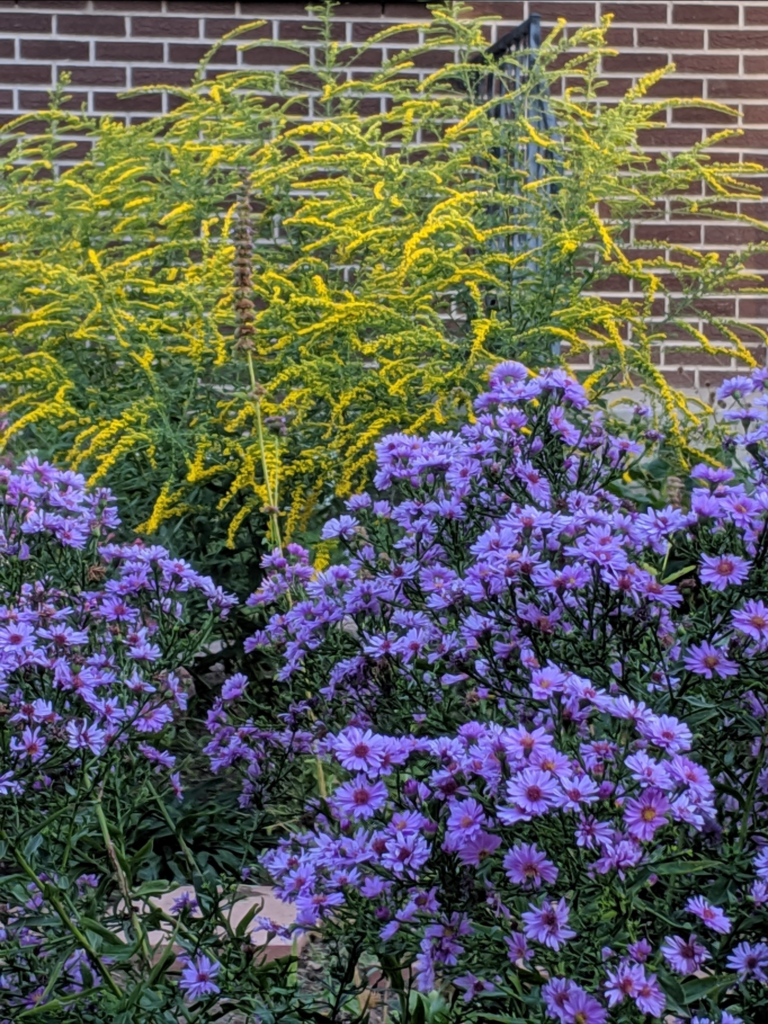by Jenifer Heath
Most of us have heard of larval host plants, even if we are not quite sure what it means to be a larval host plant. This brief piece will provide basic information about larval host plants: what they are, why they are important, some examples of native larval host plants in our area, and suggested sources for more information.
What are larval host plants? A larval host plant is a plant on which an insect can lay eggs with a reasonable expectation that their offspring will hatch and thrive. Larvae are a developmental stage of insect growth, such as caterpillars for butterflies and moths. If the larvae do not survive, there will not be a next generation. Many (but not all) insects are narrow in terms of where their larvae can survive. So if you want to support the long-term survival of these insects, you (or your neighbors) MUST provide larval host plants.

The poster child, and the most well known, of larval host plants is the Apocynaceae (milkweed) family of plants, and more specifically, plants in the Asclepias genus (milkweed or milkweeds). Asclepias spp. (species) are the only plants that can support the larvae of the monarch butterfly (Danaus plexippus). Without milkweeds, it does not matter how many pollen (protein) and nectar (energy) plants you provide for monarchs, nor how colorful the monarchs make your yard. If they cannot find milkweeds on which to lay their eggs, there will be no next generation of progeny from that (or those) monarch butterflies. There are many native-to-our-area and non-native Asclepias spp. Some readily available regionally-native Asclepias spp. are Asclepias tuberosa (butterfly milkweed, which has orange blossoms, see picture above), Asclepias incarnata (swamp milkweed, with pink blossoms, see picture below), and Asclepias speciosa (showy milkweed).
Many Asclepias spp. grow easily from seed, and most love full sun although some can handle part shade. Some prefer more water than others.


But what about pollinating insects other than monarch butterflies? Other butterflies, moths, and more? Some are generalists and are less limited to their host plants than are monarchs, but others require species-appropriate larval host plants. Here are some regionally-native host plants, along with a number of pollinator species that can use the plant as host plants:
| Larval Host Plant | Number of regional butterfly and moth species the plant hosts (See footnotes at bottom of table) | Notes |
| Oenothera spp. (evening primrose (such as O. caespitosa) | 19, D | Evening primrose cater more to the night pollinators, like moths. A very important niche for us to support. |
| Penstemon spp. (there are many locally and regionally native forms, such as P. strictus, P. pseudospectabilis | 22 | Early to mid-season blooms, often re-seed readily so they will spread to fill a larger area, or you can deadhead them, or you can dig up small plants to share with friends and neighbors |
| Helianthus spp. (such as H. maximiliani or Maximilian sunflower) | 69, B | Maximilian sunflower is native to our area and perennial. This is a tall plant with many large yellow blooms that will grow wider with more blooms in subsequent year. |
| Liatris punctata (blazing star) | 6, D, B | Pink to purple blooms, later in the season. |
| Monarda fistulosa (bee balm) | 7 | The native form of this plant is generally much taller and a pale purple color. Fragrant and a magnet for bee and butterflies. |
| Solidago spp.(goldenrod, various) | 79 | Late bloomer, mostly full sun, also a source of pollen. This plant is NOT the cause of hay fever (that is ragweed). Because Solidago spp. are pollinated by insects (not by wind), the pollen is relatively heavy and not significantly transported by wind. (That’s not to say that a few folks don’t have allergies to this, or any other, pollinator plant.) |
| Gutierrezia sarothrae (Gutierrez snakeweed or broom snakeweed) | 14, D | Some sources consider this native species to be an invasive, spreading species, but the more credible sources say it is not. It may appear to be so because cattle don’t eat it, so it’s all that’s left to reproduce in overgrazed fields. Relatively inconspicuous yellow blooms. |
| Erigeron spp. (fleabane, such as E. canus, E. strigosus, E.pumilus) | 16 | Small, daisy-like blooms usually with yellow disc flowers and white to light purple ray flowers. |
| Lupinus argenteus (Silvery lupine) | 49, D | These are NOT as showy as the lupines that are abundant in our local stores. The native form is most easily found online as seed. |
| Asclepias spp. (milkweed), including A. englemannia, A.viridiflora, A. pumila, A. incarnata and more | 11 | You need these to help the monarch butterflies, but consider dedicating some space to other host plants so you can support important species diversity among butterflies and moths. |
The note “D” in the middle column indicates plants that I’ve found difficult to find in native form at local stores. There’s a great grower in Pueblo (Wild Things) that supplies native plants to stores in the Denver area (e.g., Southwest Gardens), and has been my source for many of these. I also purchase from Trees of Corrales, but both suppliers seem to have fewer natives this year than last.
The note “B” in the middle column indicates plants that I’ve found to be very attractive to birds, mostly in the fall season, eating seeds. Remember that native plants are always better for supporting pollinators than plants that were bred to please the human eye or were imported from afar, so please buy native whenever possible. That said, probably any pollen or nectar-producing plant is better than no pollen and nectar. (Watch for a future article on the topics of natives versus non-natives.)
I live in southeast Denver, and I’ve had success with most of these perennial plants coming back year after year (with the exception of Gutierrez sarothrae and Oenothera ceaspitosa), although some show no signs of life until late spring/summer, after many of us might be convinced they had died and may even have replaced them with other plants. When planting, remember the popular adage “the first year, plants sleep, the second year, they creep, and the third year, they leap!”
| For more information: See the National Wildlife Federation (NWF) native plant finder website at https://www.nwf.org/nativeplantfinder/. You can enter your zip code and easily find plants native to your area. Please note that NWF’s lists of native plants do not directly match the native plants lists of Colorado Native Plant Society and Colorado State University’s Cooperative Extension. For most of us, that’s OK. |
Curious to learn more about transforming your garden into a habitat with Colorado native wildflowers, grasses, shrubs, and trees? Check out our native gardening toolkit, register for an upcoming event, subscribe to our newsletter, and/or become a member – if you’re not one already!
